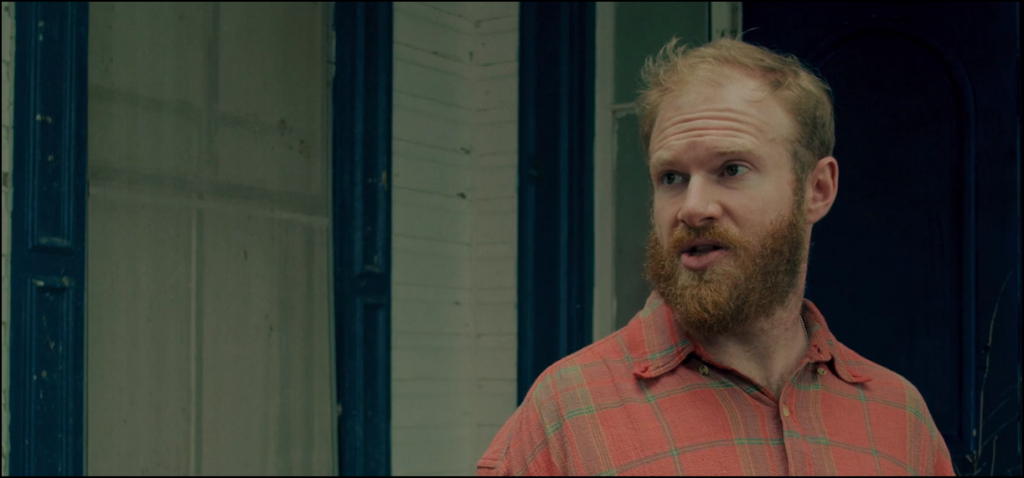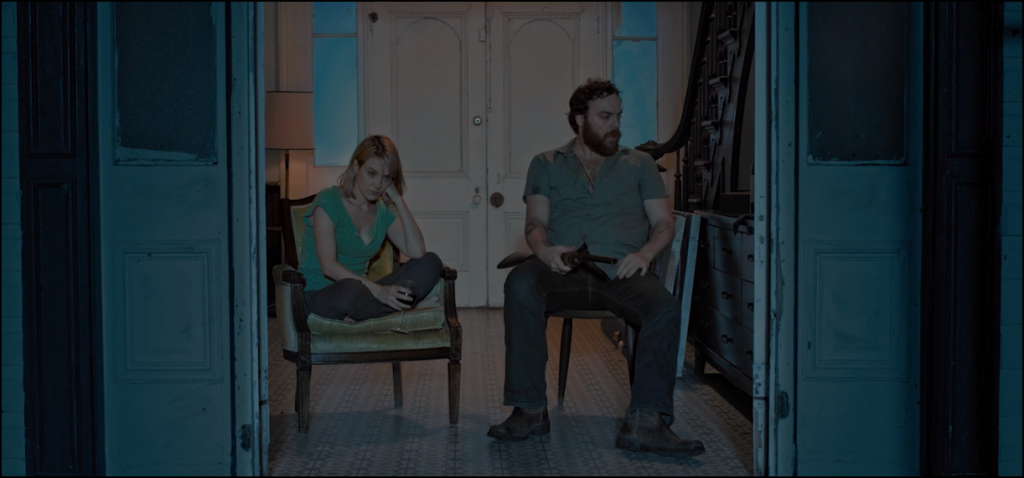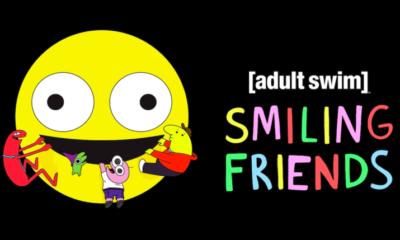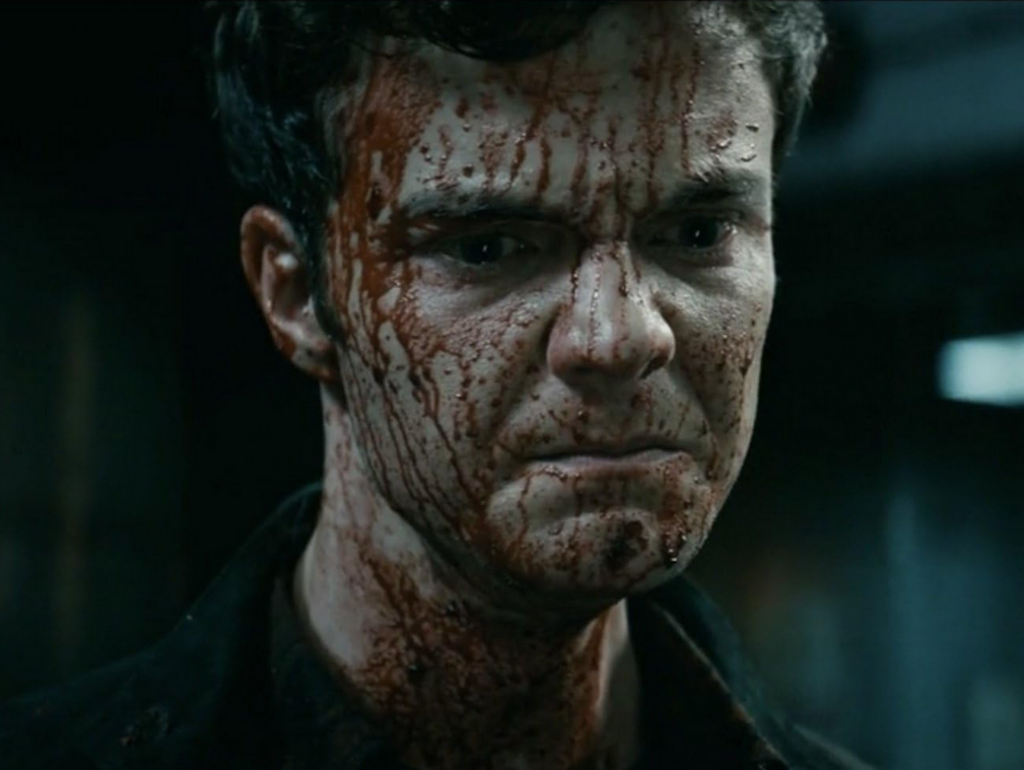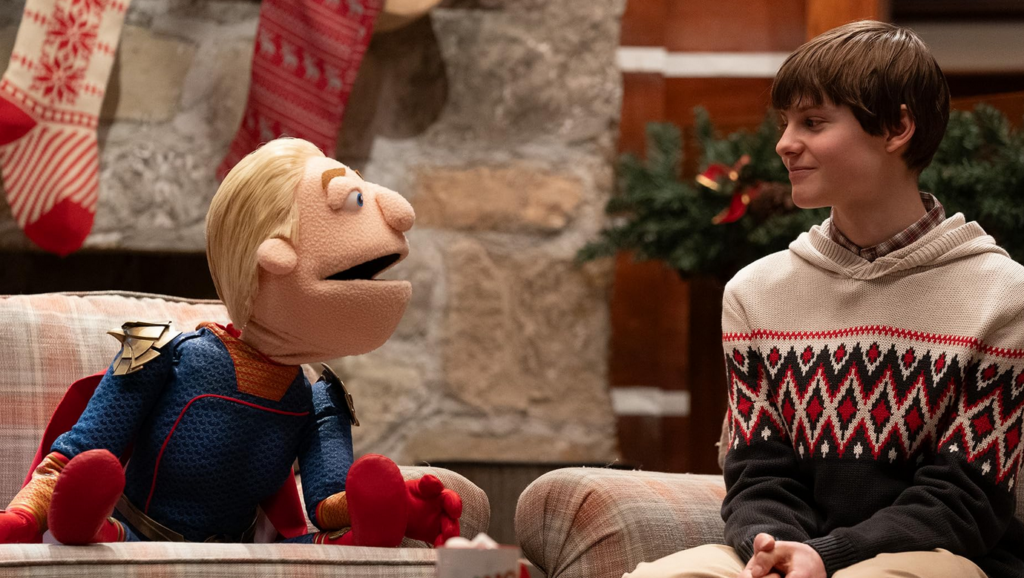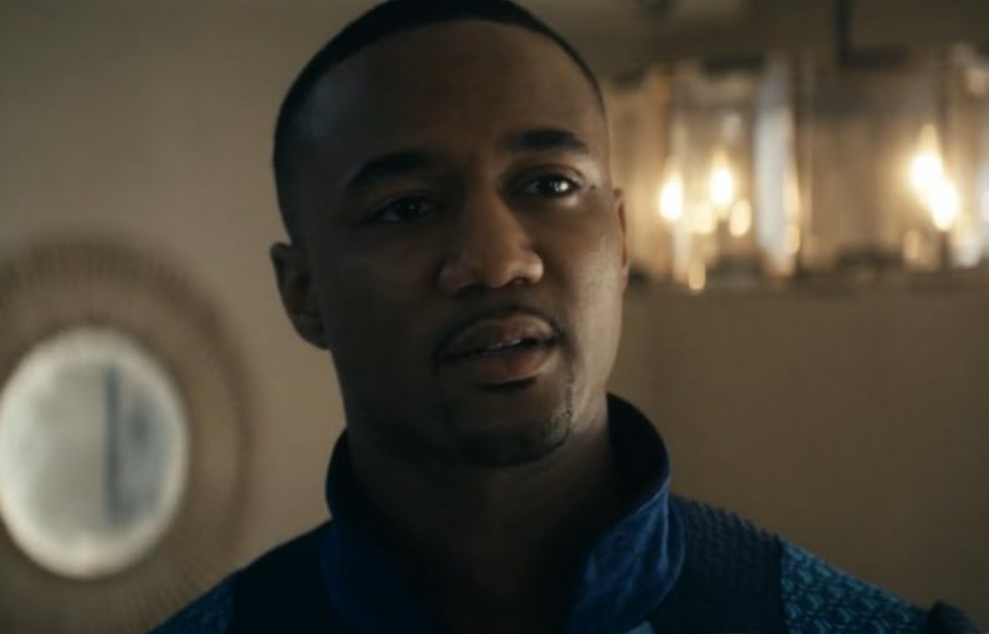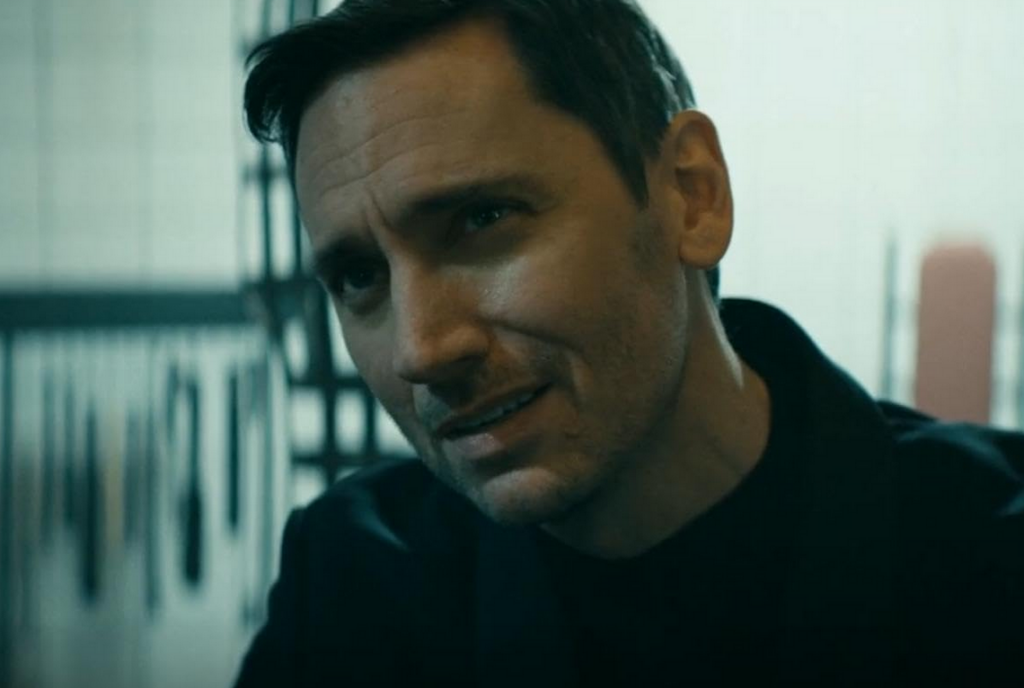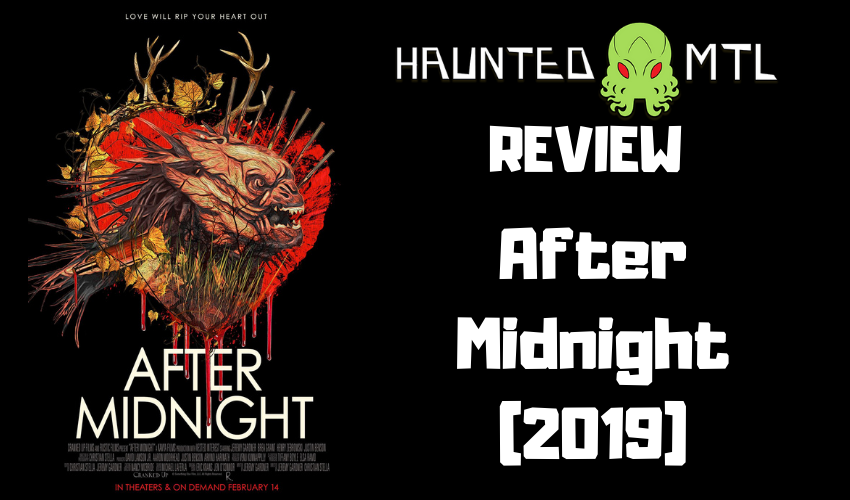
Review: After Midnight (2019)
More Videos
Published
3 years agoon
Dying relationships are their own kind of exquisite horror and much like horror films, moviegoers are drawn to serious, dramatic stories about relationships in peril. There is an element of voyeurism in it, a kind of an appeal to a desire to place oneself into the drama or at least identify with what is seen. After Midnight (2019) is relationship horror, mashing up a creature feature with a slow burn analysis of why a loving couple begin to split but does that combination work? Yes and no. Aesthetically and thematically, there is a lot to admire about the film After Midnight, but the whole of the project doesn’t quite land.
After Midnight follows Hank, a man who is grappling with the sudden disappearance of his romantic and business partner of ten years for over a month. During this time, between drinking and feeling sorry for himself, Hank finds himself stalked by a monster in the swamps outside his home every night. Directed by Jeremy Gardner (also credited as the writer) and Christian Stella, the film stars Jeremy Gardner as Hank, and Brea Grant as Abby, his missing partner. The film also features Henry Zebrowski and Justin Benson as confidants of Hank and Abby who he struggles to convince of the threat of the monster that attacks each night.
The film’s strengths lie in a number of elements, the central metaphor is a strong one, while the performances and aesthetics are, as a whole, excellent. The film’s linking of Hank’s anxieties and malaise about his relationship to the monster is excellent overall until the point in which is dropped, right around the time of Abby’s return back to their home. From there it becomes a sort of strange novelty that doesn’t really pay off until the end in a surprisingly bleak and hilarious moment. It’s there that the metaphor becomes far too obvious, however; Hank kills the “old Hank” with vigor and extreme prejudice, eager to move onto the next stage of his life and love, whatever it may hold. Despite the presence of a very real monster in the story, however, most of the dread is manifested in a powerfully awkward and frank argument between Hank and Abby near the end of the film. It’s here that the film is at its best and that the monster metaphor is at its most effective: the couple air their grievances, but Hank, unwilling to move forward keeps his hand on his shotgun on his porch, waiting for the monster to attack, not recognizing the monster that his inattentiveness has created. The sequence is slow and oppressive, the camera zooming in as more and more layers of Hank and Abby’s relationship are torn away from the core problem: Abby wants more from life, and Hank is content with things as they are. It’s the most compelling moment in the film and more raw and brutal than any of the few depicted monster attacks.
So much of the film’s success hinges on the performance of Jeremy Gardner and he does a fine job at playing a sulking manchild, which is absolutely necessary given the central tension of the film. He plays drunk well, and even at his most manic, mopey, or sloshed, there is still a sort of charm that persists and helps explain why Hank and Abby have remained together for over a decade, albeit unmarried. Hank is a functioning adult, but Gardner is able to give him that sort of necessary distractedness that plays out in his scenes with his friends; someone who is hearing how to solve his problems, but not really listening to the people who are saying them. Abby, played by Brea Grant, doesn’t get nearly as much to do in the film, but certainly leaves an impact. She is seen, initially, strictly through Hank’s rosy memories, but her sudden return at the midpoint of the film, however, gives her necessary depth by contrast; Hank saw things one way, but Abby introduces a cold, hard reality into the fantasy. Grant’s excellent in both cases, she looks and appears radiant in the memories, someone anyone can fall in love with, but she also plays someone deeply frustrated and bored when reality sets in on her return. It’s a largely thankless role, but she played it with aplomb.
The two other major performances in the film Henry Zebrowski’s Wade, and Justin Benson’s Shane are a little more uneven. Not necessarily bad, but their roles are largely stock, though they do present some fun moments. Zebrowski, for example, comes off as himself rather than a character, as though the role was written for him. The podcaster/comedian, known so heavily for his manic performances, does come off as slightly subdued, as fits the role of “Florida Man becomes Father” that Wade represents. He gets some fun dialogue and a memorable scene where here drinks from a bar mat, but his character does little else but provides a funny sounding-board for Hank’s thoughts and reflects Hank’s anxieties of being a “settled man.” Benson gets the tougher job playing the skeptical realist and a cop, no less, but holds himself well in the role. He is given the necessary role of drumming up conflict for the ending as the worst dinner guest in a film, second to a literal monster, but it works. His character does feel a bit one-note, however, the cold splash of water on Hank’s issues and little else.
The run-down house out near Florida swamps looks excellent, and as a whole, the cinematography puts in work visualizing the issues the film tackles. Hank’s perspective in his memories is quite literally played as angelic with halos of light around Abby. The violent contrast of the house upon his waking, which happens several times in the film, serves to emphasize the grim reality of his life decaying because of his refusal to move on. As for the monster? The design is fun, especially because the film subverts expectations quite a bit when it comes to how much they reveal. Just as one thinks the monster’s fleeting appearances are necessarily constrained by budget, one finds themselves surprised.
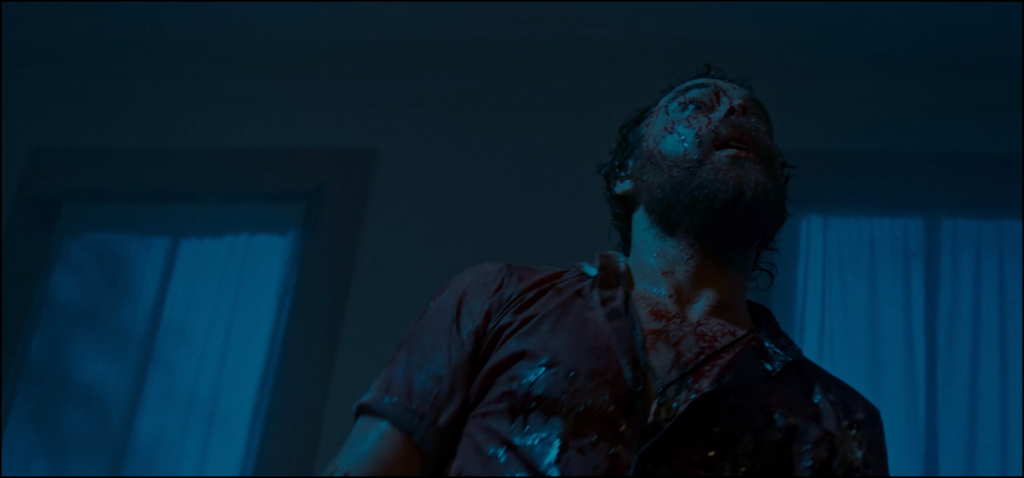
The uneven structure of the film is what harms it most, as it can never quite get the combination of creature-feature and relationship drama right. There are flashes where it happens, but overall, for a large portion of the film viewers may forget about the presence of the monster, more consumed by the horror of a dying relationship. When the frayed threads entwine at the conclusion, however, it is too late. Despite those issues, the film accomplishes a lot during an 83-minute runtime. After Midnight is worth a watch and offers some fun moments, some compelling relationship drama, and a cool-looking monster.

You can watch After Midnight on Shudder.
David Davis is a writer, cartoonist, and educator in Southern California with an M.A. in literature and writing studies.

You may like
We have come now to the finale of season four of The Boys. And while it didn’t have the literal blood fireworks I wanted, someone did get ripped in half in the air. So, that’s pretty close.
As a note, I will try to avoid spoilers as much as possible. This ending was a hell of a gut punch that should be experienced as blindly as possible. That being said, I will not be able to avoid spoilers and still give a full legitimate review. Proceed at your own risk.
The story
The main storyline for this episode is the attempted assassination of President-Elect Robert Singer. The Boys join forces with the Secret Service to protect him. But, as we learned last episode, Annie has been replaced with a shapeshifter. A shapeshifter that was welcome not just into Hughie’s anus, but into the protective bunker in which the President-Elect is hiding.
What worked
The first thing I want to discuss about this episode is the ending. But we need to do this carefully.
The important thing here is that the ending breaks your heart on so many levels. So many terrible things are happening to characters that it’s almost hard to keep track. And each moment is significant to each character.
I cannot give a specific example. But no matter who your favorite character is, you’re going to weep for them.
Unless your favorite character is Sage. And this is the next thing that made this episode so fantastic.
I don’t think I’m spoiling anything to say that Sage’s plans worked out exactly as she wanted them to. And she got exactly what she wanted.
What she wanted wasn’t power. It wasn’t money or fame or vengeance. It wasn’t to win the love of anyone. She just wanted to see if she could do it.
That is a terrific, terrifying motivation! Because all she wants is to play a massive game of chess with people as pieces. She doesn’t care about anyone. She just wants to see how many people she can manipulate. She just wants to set things on fire to see if she can.
Fantastic. A plus villain work.
The next thing I want to discuss is a cornerstone of the whole series.
The morality of The Boys shifts through the series. While it’s very much a battle to save the world from overpowered super monsters, it’s also a battle for the souls of our real heroes. And in that battle, there are two warring factors. We have Hughie, always trying to bring everyone up to a better level. And we have Butcher, who has no problem at all hitting rock bottom with a shovel in hand to do some more digging.
In this episode, we saw almost every member of The Boys challenged. Will they rise to their higher angels, or sink with their demons?
On a similar note, I am so glad that the writers kind of addressed my issues with Annie. They did this by having the shapeshifter get right into her face and accuse her of thinking that she’s better than everyone.
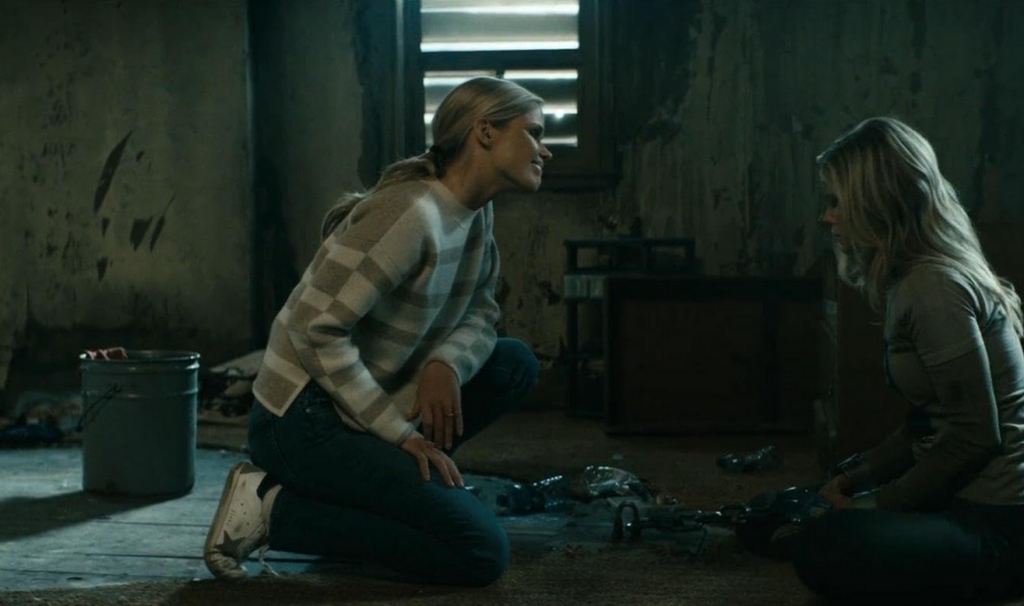
While that was devastating for the character, it was a little cathartic for those of us who felt like Annie was a little too good of a good guy.
What didn’t work
This is a small matter, but it is an issue that I want to address. After Annie finds out that Hughie slept with her doppelganger, she is furious at him.
In addition to this being unfair, it’s also a very cliche element to add. In almost every instance of a lookalike in fiction, there’s a moment where the love interest of the victim is fooled. Or almost fooled. And it’s always the same fight. It’s just played out and predictable. I’m just glad that it didn’t last very long.
Now that we’ve come to the end of the season, I can officially say that it was amazing. The story was deep and rich. The special effects were a stomach-turning good time. The character development was spot-on and satisfying. And, of course, it left me just about gagging to see what happens next. Unfortunately, it looks like we’ll have a bit of a wait. Because as of right now, the fifth season isn’t expected until 2026.

We’ve reached the second to last episode of The Boys, season four. And, as is appropriate for the penultimate episode of any show, things have to get a lot worse before they can get better.
Let’s discuss.
The story
Christmas is coming, and the whole world is getting ready. Ryan, despite being very clear that he didn’t want to appear on any TV shows or movies, has been strong-armed into participating in a Vought puppet Christmas special. He draws the line, though, when asked to sing about turning one’s parents in if they start talking about woke things.
Meanwhile, The Boys are trying to keep each other together. Butcher decides to take Sameer to the rest of the team. He also gets Frenchie out of prison, hoping they can make the Sup virus necessary to finally take down Homelander. Instead, this decision means disaster for one member of the team.
What worked
I first want to talk about Ryan’s speech near the end of the episode. Because it was exactly the moral of this whole story.
Ryan’s dad is a monster. His stepdad is also kind of a monster. But Ryan is a good kid. He cares about people, about family. And while he loves Homelander and Butcher, he doesn’t want to be like them.
Even better, this speech sounded like something a kid would say. Ryan didn’t open his mouth and start sounding like a college student all of a sudden. He sounds like a kid who misses his mom and wants to live up to the good standards she set for him. And I think that’s terrific.
Speaking of Homelander, he shot himself in the foot in this episode. I said earlier in the season that his hubris was going to be his downfall, and I was right. Without Sage, he just has the same weaknesses he’s always had. He’s going to fail because he just isn’t clever enough or patient enough to succeed.
Without Sage, I think a win is in the bag for The Boys. This isn’t to say that Homelander by himself isn’t dangerous. It’s just that he’s more like a wildfire than a controlled burn. He’s going to cause a lot of damage, but not get anything he wants out of it.
More’s the pity for him and everyone else who has to share his world.
Finally, I am thrilled with A-Train’s redemption story. I love that he wants to be a good person not to save himself, but to be a good person. His honest, pure and warm reaction to that little kid smiling at him in the last episode was heartwarming. It changed him in a moment, bringing to light a goodness that he’s been keeping under wraps for a long time.
This, along with Ryan’s courageous speech, proves once again what The Boys does so well. Yes, it’s gruesome. Yes, there’s blood and balls and batshit events. Yes, someone occasionally gets ripped in half. But there is a true human goodness in the story. One that we catch glimpses of. There are good people among the monsters. There is hope for redemption.
What didn’t work
Of course, so few things in this life are perfect, and this episode was no exception. For instance, I was irritated by the insinuation that Butcher cheated on his wife.
That just doesn’t make any sense. We’ve seen flashbacks of Billy and Becca. They were happy. He was happy. He was head over heels for her. And I don’t think it’s realistic or necessary for the character to throw in that he cheated. It does nothing to add to the story, it’s just a weird and offputting moment.
Doesn’t Butcher have enough to hate about himself? Can’t we just give him that at least he was a good husband?
Finally, I kind of hate that we ended up with Annie being caught. It’s just cliche, which is something I don’t normally say about this show. It feels lazy unless they do something very clever with it in the last episode. Which, I suppose, they might.
Next up is the season finale. And with this season being as insane as it has been, I’m expecting nothing short of bloody fireworks. And I mean literal fireworks of blood. At this point, would it surprise anyone?
 (4 / 5)
(4 / 5)
Episode six of The Boys was one of the most surprising episodes of the series so far. And that is certainly saying something. Because this season has so far been bonkers.
The story
Our episode today revolves around a party at Tek Knight’s lovely mansion. Yes, it does look just like Wayne Manor.
The Boys know that Tek Knight is working with Homelander on something, but they don’t know the details. So they decide to send Hughie in to bug the mansion.
Because that’s worked so well the other two times he’s tried to hide a bug!
It should surprise no one that this time goes no better. Hughie finds himself in Tek Knight’s basement. And by that I mean his BDSM dungeon.
Meanwhile, the party upstairs is no less disturbing. Homelander and Sage are trying to convince some well-off political donors to support a cue after the election. When pressed for details on his plan, Homelander freezes. He looks to Sage for help, but she wasn’t recently shot in the head and still in the junk food stage of her healing.
Fortunately, or unfortunately depending on your point of view, Neuman jumps in and saves the day.
What works
If I’m going to say one thing about this episode, it didn’t hold back at all. I didn’t expect them to show a character masturbating, sitting their bare behind on a cake, or spraying breastmilk into someone’s face. But every time I thought they’d cut the scene and let something be left to our imagination, they did not do that.
This is a dangerous move. Whenever you show the monster, you run the risk of them not being scary enough, or gross enough. As Stephen King says in Danse Macabre, to leave this sort of thing to the imagination if the reader makes things so much worse. So when they finally experience the monster, they might say that this isn’t so bad. It could have been so much worse.
But in this case, they managed to avoid that by making the scenes, especially the ones in Tek Knight’s dungeon, so much worse than I imagined it would be.
What doesn’t work
While this was a deeply disturbing episode in many ways, there was one really innocent and sweet moment.
And yes, I did have a problem with it.
Confronted by Firecracker, Annie decides to apologize for spreading rumors about her when they were kids. She tells her that she is genuinely sorry.
And I believe her. I don’t think Firecracker did, but I did.
So why is this an issue? Because I’m starting to think that Annie is maybe too nice. She is too good.
I know that Annie is our good guy. But every one of the other good guys has flaws. Hughie let his pride get in the way and took Temp V. MM hid himself from his daughter instead of teaching her to work through her emotions. Kimiko is far too closed off and has a hard time trusting others. Frenchie numbs himself with drugs. And well, what hasn’t Butcher done?
It is unrealistic that Annie is just so kind and so flawless. We all have shadows in our personalities. We all have weaknesses, we all mess up. We all do things we wish we could take back. The fact that Annie doesn’t seem to have anything like that is not just unrealistic. It’s infantilizing.
Give her some deep dark secrets. Give her something real to regret.
This was a shocking episode, even for someone fairly jaded like me. I wasn’t expecting the sort of weird sexual depravity, though I guess maybe I should have seen it coming. It was dark, upsetting, tense, and funny as hell. And with just two episodes left in the season, I can imagine the stakes are only going to get higher.
 (4 / 5)
(4 / 5)
By the way, if you like my writing you can get my short story, Man In The Woods, on Smashwords and Amazon.

